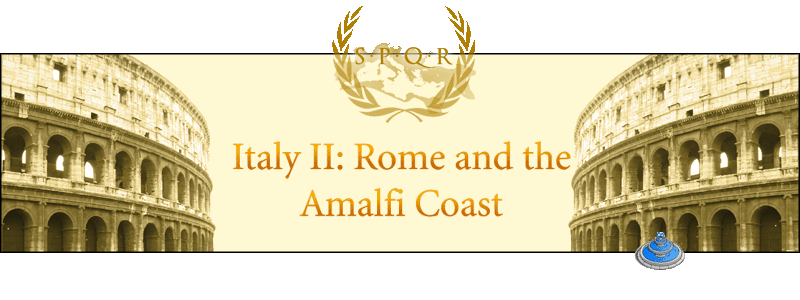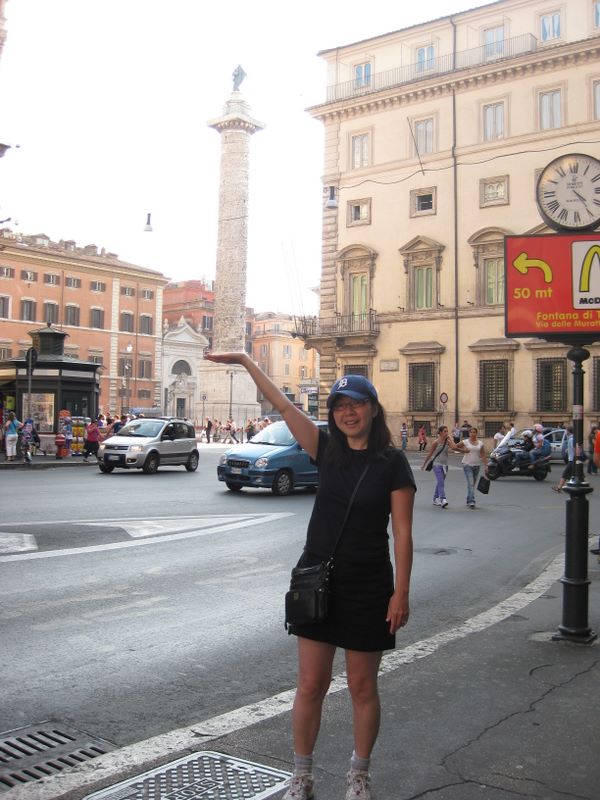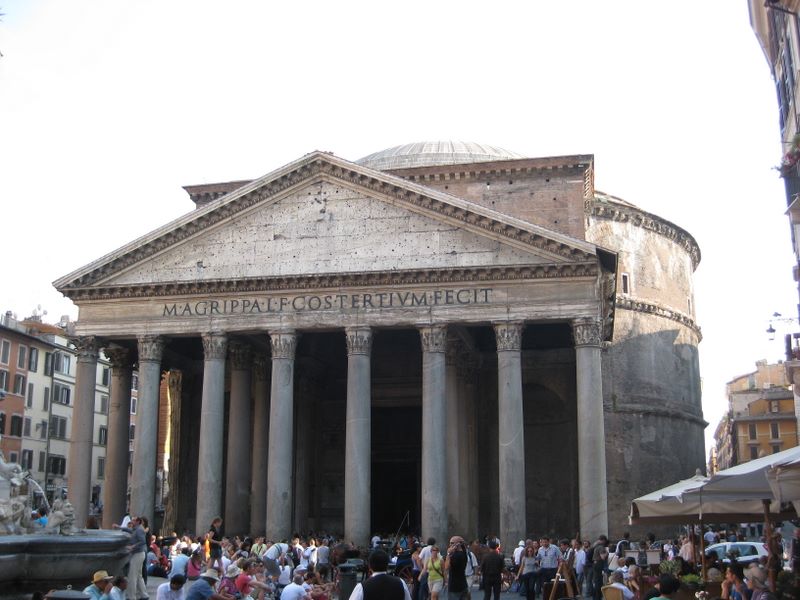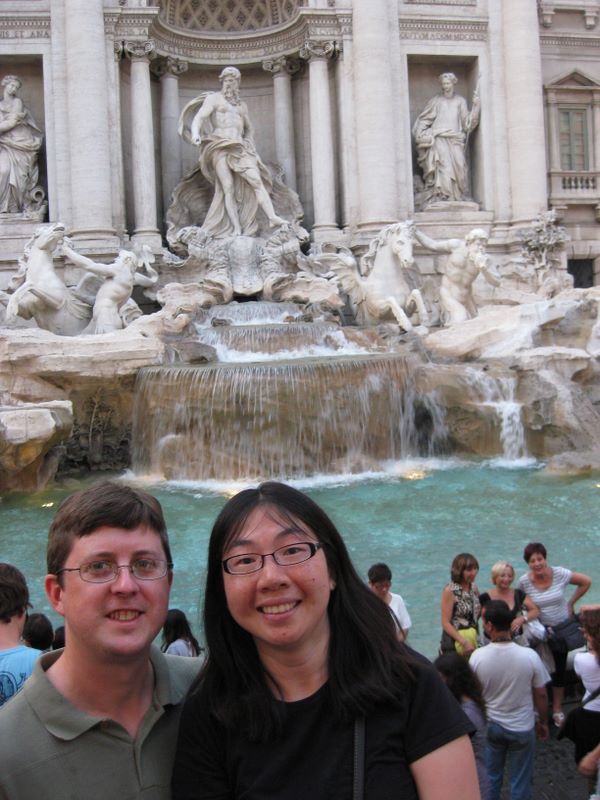Modern Rome?
So with the rest of the afternoon and evening ahead of us, we decided to finally explore some of modern Rome, so we took a bus down towards the Pantheon. Oh wait, that is ancient Rome too. But wait!The bus system is completely incomprehensible. I mean, really. I consider myself fairly good with maps (as long as they are honest), and this was just out of control. I must have stared at that thing for 15 minutes before I found a route that would take us from where we were to where we wanted to go. And Rome is such a compact city, we probably could have walked there in half an hour. But the bus ride was cool, and we were soon exploring the other side of town.
We had some snacks and drinks in the square that contained the Pantheon. A co-worker who had just been to Rome complained about the high prices of beer in the main squares and recommended going on the side streets for better prices. While that may be true, to me that is missing the point. How cool is it to be drinking your beer while sitting 200 feet away from the actual Pantheon?!?
 After drinks we couldn't get in there because apparently you can book the Pantheon for your wedding! Instead we walked to the Plaza Navona
After drinks we couldn't get in there because apparently you can book the Pantheon for your wedding! Instead we walked to the Plaza Navona , where our ears were immediately bombarded by another guy blasting away on a loudspeaker! What the crap was going on today?!? Well, today in the Plaza Navona we had what appeared to be a communist rally. Argh.... We were able to check out the cool fountains and a church or two there, but it still sucked having to listening to more yelling the entire time.
, where our ears were immediately bombarded by another guy blasting away on a loudspeaker! What the crap was going on today?!? Well, today in the Plaza Navona we had what appeared to be a communist rally. Argh.... We were able to check out the cool fountains and a church or two there, but it still sucked having to listening to more yelling the entire time.We walked back to the Pantheon and had to wait about 15 more minutes until the wedding was finished; the guards let us all inside then, and we all cheered for the new bridge and groom. That was pretty cool. Then pictures of the dome and of Raphael's tomb ensued.
Completing our whilrwind tour of Rome's most famous sights we next found the Trevi fountains, which was just a few blocks away from the Pantheon. And even though I knew it was big, this time I was amazed by the spectacle before me
 . The Trevi fountain is the terminus of the Aqua Virgo
(later rebuilt and renamed the Aqua Vergine). We wound our way through the crowds down to the water's edge and sat and drank in the sights. Very relaxing there, even with all the crowds. One could linger there for hours, but we were pretty hungry by this point, so off to the Spanish Steps! We got there right at 7:30 and we missed the tourist rush by about ten minutes! We had a seat near the entrance of the outdoor eating area, so we had a nice view of the other tourists piling up waiting for tables.
. The Trevi fountain is the terminus of the Aqua Virgo
(later rebuilt and renamed the Aqua Vergine). We wound our way through the crowds down to the water's edge and sat and drank in the sights. Very relaxing there, even with all the crowds. One could linger there for hours, but we were pretty hungry by this point, so off to the Spanish Steps! We got there right at 7:30 and we missed the tourist rush by about ten minutes! We had a seat near the entrance of the outdoor eating area, so we had a nice view of the other tourists piling up waiting for tables.The Spanish Steps seemed to be the place where the young hip kids hang out, so we felt right at home. We sighed and relaxed against the steps, watching young illegal immigrants try to sell flourescent wizz-toys (that shot up into the air after you wound them up on some sort of stick) to all the tourists with kids, or anyone in general really.
It was back to our hotel after that via the subway. Resting up was in order as tomorrow we have an actual planned epic hike coming up!
Walking the literal path of history

 We always get drinks/dinner near tourist area b/c we like people watching
We always get drinks/dinner near tourist area b/c we like people watching



